Welcome to the 12th edition of First Nations News & Views. This weekly series is one element in the “Invisible Indians” project put together by Meteor Blades and me, with assistance from the Native American Netroots Group. Last week’s edition is here. In this edition you will find my personal encounter as second-grader with Mormon racism, a look at the year 1869 in American Indian history, Johnny Depp’s meeting with starstruck Navajo leaders and several news bullets. Click on any of the headlines below to take you directly to that section of News & Views or to any of our earlier editions.
This Week in American Indian History in 1869
~ Navajo Nation Leaders Welcome Johnny Depp
on Film Set in Monument Valley ~
By navajo
I was probably in the second grade. The Sunday school teacher in my southern Utah town was giving a lesson from the Book of Mormon to a small class of a few girls. It had to have been in very simple terms since we were so young. I can see now that the lesson was meant to be a self esteem-builder. But it backfired on me. The teacher was trying to show us little girls how much God loved us and how important we are on this earth to do his work. I was barely paying attention since I really wanted to be home watching Rocky and Bullwinkle. I resented missing all my cartoons and being forced to go to church, which I considered boring. But I had no choice in the matter.
That day, however, as the teacher recited the lesson and looked from girl to girl, my attention perked up when she said, “and YOU are all white and delightsome to our lord and he has special plans for you in this world …” Just then, she came to me and her roving eyes stalled out. She stammered a couple of times because she had forgotten that her rote lesson was being delivered in a class that now included a little brown girl. An Indian that the Book of Mormon (I later found out) describes as bloodthirsty, fierce and loathsome. An Indian whose skin was dark because of a curse from God.
After gulping a couple of times, she said something like “but Neeta here is a Lamanite (the Book of Mormon’s name for the descendants of Laman, who was cursed with dark skin for displeasing god) and we welcome her. They too, if they work very hard can go to the Celestial Kingdom.” That being the highest of the three kingdoms in heaven. I was told that if I made it to the Celestial Kingdom my skin would turn light.
This promise of skin lightening was commonly preached when I was growing up. In fact, there was a Paiute woman in our town who had vitiligo, “a skin condition in which there is a loss of brown color (pigment) from areas of skin, resulting in irregular white patches that feel like normal skin.” My full-blood Navajo mother, Flora, a devoted Mormon, said that one of the bishops had told Mrs. Kanosh that the skin-color change was her reward from God for going to church. My mother was so pleased with this news. She loved anything that pointed to proof the Mormon gospel was true.
Gradually, over the next few years, I learned more of what Joseph Smith (the founder of the church and the author of the Book of Mormon) had said about Indians. We were innately wicked. We converted ones had to be constantly watched against reverting to our evil, heathen ways. This was on top of the church’s attitudes toward women. The General Counsel (the church’s highest governing body) instructed women to obey their husbands, the priesthood holders. Another instruction I remember: The priesthood holder should love the lord first and then his wife. One really had to accept a lot of demoralization to be female AND BROWN when I was growing up Mormon.
Attitude was bolstered by action. The church’s Indian Placement Program ran from 1947 to 1996. Its mission was to remove children from desolate reservations and help them get an education by placing them in Mormon foster homes. Any child involved had to be baptized in order to participate. Nothing subtle about this virtual kidnapping. The church took children away from their homes to assimilate them into Mormon culture.
As the daughter of a Navajo mother and a white father, I straddled two cultures differently than the foster kids. I had many relatives on the reservation and spent much time in the summers there. But it wasn’t home. In talking with some of the foster kids, I learned they had a hard time when they were younger. Some didn’t want to join the church but were forced into it. They found it difficult to live in two worlds, the white world during the school year and then back on the reservation during the summer. Some of them sadly recounted that they were made fun of back on the reservation because they had lost some of their language and traditional knowledge.
The majority of the Indian students attending school in our town were not foster kids but lived instead at the Indian dormitory on the outskirts. There was no requirement there to join the church. But those kids also told me about being homesick and feeling like an outsider in both worlds.
Today, it’s clear to most people that taking young children away from their families and culture is NOT a good thing. In fact, it’s terrible. And it happened to 20,000 children in the Mormon church’s Indian Placement Program.
These decades-old memories came flooding back to me when I saw a recent report that Lamanite action figures were being sold at the church-owned Deseret Bookstore and online by a private company, Latter Day Designs.
The Book of Mormon descriptions I came to strongly resent are used for each product.
Behold:
[01020] $5.95
Lamanite Warriors were lazy and idolatrous … wild and ferocious … believing in the false traditions of their fathers. They trusted in their own abilities and not in the strength of the Lord. The Book of Mormon tells that the heads of the Lamanites were shorn, they were naked, save it were skin which was girded about their loins… (Alma 3) They were armed with bows, arrows, stones and slings. …They had marked themselves with red in their foreheads after the manner of the Lamanites… These wicked warriors … reap their rewards according to their works, whether they were good or whether they were bad, to reap eternal happiness or eternal misery …
This product was added to our catalog on Thursday 30 April, 2009.
[01005] $5.95
Laman, the oldest son of Lehi and Sariah, was stubborn, hard-hearted, and did not believe in the righteous teachings of his father, Lehi. The Book of Mormon records that Laman was so rebellious that he refused to listen when an angel from the Lord told him to change his behavior. Laman was a troublemaker and seldom helped his family. His wickedness caused his parents a great deal of pain and sorrow.
(Laman is available in two versions. The one on the right has been cursed by god with dark skin for his wickedness.)
This product was added to our catalog on Thursday 30 April, 2009.
[01019] $5.95
King Lamoni was a ruthless leader who ruled his people harshly. He often executed servants for being careless with his herds of sheep. Ammon, desiring to teach the Gospel to the Lamanites, fasted and prayed for guidance from the Lord. He became a faithful servant to King Lamoni. Recorded in The Book of Mormon (Alma 18 & 19) is the marvelous conversion to the Gospel of Jesus Christ of Lamoni, the queen, servants, and many of his people. Lamoni repented and helped his people become zealous in keeping the commandments of God.
This product was added to our catalog on Thursday 30 April, 2009.
There are three more Lamanite action figures. However, they are good guys and are approved by God for their good works unto him. It’s curious though. Shouldn’t their skin have been lightened for being such obedient souls? By the way, that hot-buff one is called a Stripling Warrior because he’s young. Conveniently, there were exactly 2000 of them in the Book of Mormon for important plot purposes.
Mormons weren’t the only people who believed that the curse of Cain was dark skin. That was once the standard Christian view. But Mormons took it very seriously and barred African Americans from holding the priesthood because of the curse. I was 22 years old in 1978 when the church back-pedaled and allowed black men to hold the priesthood. That was quite a big step in damage control. But the teachings that produced the racist beliefs in the first place have never been officially repudiated. Still, I never thought I’d see African Americans allowed into the priesthood. It was hardly enough to keep me in the church and I left shortly afterward.
All the derogatory descriptions about Lamanites remain in the Book of Mormon in verses like Alma 3:6:
“And the skins of the Lamanites were dark, according to the mark which was set upon their fathers, which was a curse upon them because of their transgression and their rebellion against their brethren, who consisted of Nephi, Jacob, and Joseph, and Sam, who were just and holy men.”
Those descriptions live on in Sunday school lessons and action figures for impressionable Mormon children. It’s hard to change the word of God in books like that, so the record on what the Mormons think of Indians is written on golden plates, never to be changed.
How one can be Indian and a member of the Mormon church is completely beyond me.

By Meteor Blades
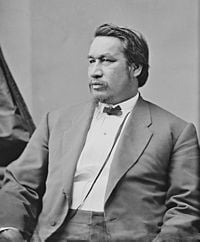
On April 21, 1869, President Ulysses S. Grant appointed Donehogä’wa, a Seneca Indian who had been his adjutant and military secretary during the Civil War, as the first Native commissioner of Indian affairs. That made him the overseer of the civilian bureaucracy responsible for some 300,000 Indians. In the white world, he was known as Ely S. Parker.
Born in 1828 on the Tonawanda Reservation in Indian Falls, N.Y, to a prominent Seneca family with a lineage tracing to the famed Red Jacket, he was educated at a missionary school and learned perfect English by age 14 when he became the scribe and translator for his tribe. That proved crucial when the government tried to exile the Senecas to Kansas in the late 1840s as part of Indian removal policy. The tribe fought this vigorously, its leaders arguing that the treaties requiring removal were unfair and had been arrived at without their consent. Parker lobbied Congress at the time, but he was just 19, and despite his diplomatic skills, his efforts failed. Ultimately, however, the Seneca prevailed in court, and most of their descendants now live in New York on the same land they traditionally held. Some Seneca also live in Oklahoma.
Parker studied law for three years. But after completing his studies, he was not allowed to take the bar because he was Indian. With the help of a scholar studying the kinship structure of the League of the Haudenosaunee (the six-tribe Iroquois Confederacy of which the Seneca are a part), Parker enrolled at Rensselaer Polytechnic Institute, got his civil engineering degree and practiced as an engineer from 1850 until the Civil War broke out. In 1852, he became one of the 10 chiefs of the Seneca nation.
It was as an engineer in Galena, Ill., where he had moved in 1857 to build a customshouse, that he met a demoralized, hard-drinking, ex-Army officer, U.S. Grant, then working as a storekeeper. They hit it off.
When the war broke out, Parker tried to raise a regiment of Iroquois volunteers, but the New York governor nixed the idea of Indians in Union uniforms. Parker then tried to join the Army directly but was again rejected because he was an Indian, this time by the Secretary of War.
But persistence was one of Parker’s key traits. So he contacted Grant who finagled him a job as an engineer with the rank of captain in 1863. He performed well and Grant soon appointed him as his adjutant and later his military secretary, a job for which he was promoted to lieutenant colonel. Much of Grant’s subsequent correspondence was written by Parker. He also helped draft the surrender documents signed by Grant and Robert E. Lee at Appomattox. Those documents are in Parker’s handwriting.
Parker remained as Grant’s military secretary until he resigned from the Army in 1869 with the rank of brigadier general when the president appointed him to head the Bureau of Indian Affairs.
But, as he rose in white society, having married the socialite Minnie Orton Sackett in 1867, the Tonawanda Senecas became increasingly critical of him for neglecting his own people and taking stances they felt reflected an anti-Indian attitude. That wasn’t how Parker saw it. In his 1867 Report on Indian Affairs, he wrote:
“…as the hardy pioneer and adventurous miner advanced into the inhospitable regions occupied by the Indians, in search of the precious metals, they found no rights possessed by the Indians that they were bound to respect. The faith of treaties solemnly entered into were totally disregarded, and Indian territory wantonly violated. If any tribe remonstrated against the violation of their natural and treaty rights, members of the tribe were inhumanely shot down and the whole treated as mere dogs. Retaliation generally followed, and bloody Indian wars have been the consequence, costing many lives…”
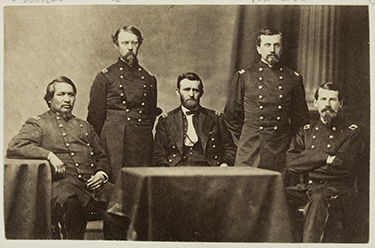
with Gen. U.S. Grant in the center.
But as a man straddling two worlds, as so many Indians did then and today, he was conflicted in his own views and afflicted by those of the dominant society. Obviously having already in mind a plan before he took office, Parker crafted what would become Grant’s “Peace Policy,” a means to reduce military conflicts with the tribes. Despite his views that Indians had been sorely mistreated, Parker still bought into the widespread view of the era that the “savages” should be “civilized” and have the Indian taken out of them. Here’s how he addressed the issue in his BIA report:
Arrangements now, as heretofore, will doubtless be required with tribes desiring to be settled upon reservations for the relinquishment of their rights to the lands claimed by them, and for assistance in sustaining themselves in a new position, but I am of the opinion that they should not be of a treaty nature. It has become a matter of serious import whether the treaty system in use ought longer to be continued. In my judgement it should not. A treaty involves the idea of a compact between two or more sovereign powers, each possessing of sufficient authority and force to compel a compliance with the obligations incurred. The Indian tribes of the United States are not sovereign nations, capable of making treaties, as none of them have an organized government of such inherent strength as would secure a faithful obedience of its people in the observance of compacts of this character. They are held to be the wards of the government, and the only title to the law concedes to them to the lands they occupy or claim is a mere possessory one. But because treaties have been made with them generally for the extinguishment of their supposed absolute title to land inhabited by them, or over which they roam, they have become falsely impressed with the notion of national independence.
It is time that this idea should be dispelled, and that the government cease the cruel farce of thus dealing with its helpless and ignorant wards. Many good men, looking at this matter only from a Christian point of view, will perhaps say that the poor Indian has been greatly wronged and ill treated; that this whole county was once his of which he has been despoiled, and that he has been driven from place to place until he has hardly left to him a spot where to lay his head. This indeed may be philanthropic, and human, but the stern letter of the law admits of no conclusion, and great injury has been done by the government deluding these people into the belief of their being independent sovereignties, while they were at the same time recognized only as it s dependents and wards.
As a consequence of this report and subsequent pressure, no treaties were signed with the tribes after 1871. But most of Parker’s other recommendations for restructuring the bureau and ending the corruption associated with providing goods for the tribes and private acquisition of Indian resources, were ignored. And, ironically, it was a scandal, that of the deeply corrupt Indian Ring, that forced him to resign, even though he was personally cleared of any wrongdoing and the ring had come into being well before he as appointed.
After resigning, Parker made a quick fortune in the stock market, lost it in the Panic of 1873, then got what amounted to a clerk’s job where he worked until retiring. He died in poverty in Connecticut in 1895 and was buried there. At the request of tribal leaders, he was exhumed two years later and reburied in Seneca territory next to his ancestor, Red Jacket.

Navajo Nation Leaders Welcome Johnny Depp on Film Set in Monument Valley
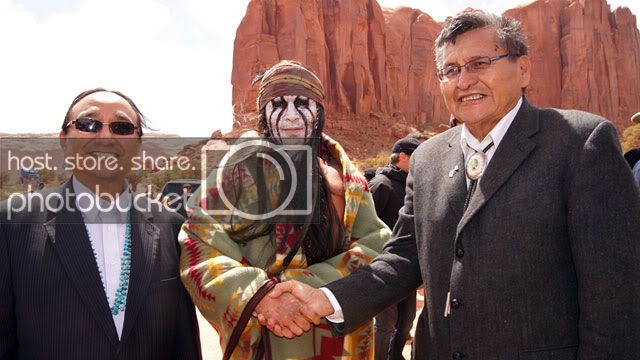
By navajo
We reported in our fifth edition that Johnny Depp had been cast as Tonto in the upcoming Disney film, The Lone Ranger. Some concern had been expressed for casting a non-Native in the role, although Depp says his great-grandmother had some Cherokee blood. The film is currently on location in Monument Valley. Navajo Nation President Ben Shelley, Vice President Rex Lee Jim and Surgeon General Gayle Diné Chacon visited the set to welcome and present Johnny Depp with an authentic Pendleton blanket! Yes, let’s give a product from the number one retailer of Indian misappropriation! (FAIL) I guess it didn’t occur to anyone to give an authentic Navajo weaving …
The Facebook Indians immediately posted their disdain for such fawning over a role that has long been considered a racist portrayal of American Indians. They also criticized Navajo President Ben Shelley’s lack of backbone regarding Sen. John McCain and Sen. Jon Kyl’s water shell game proposal, SB2109.
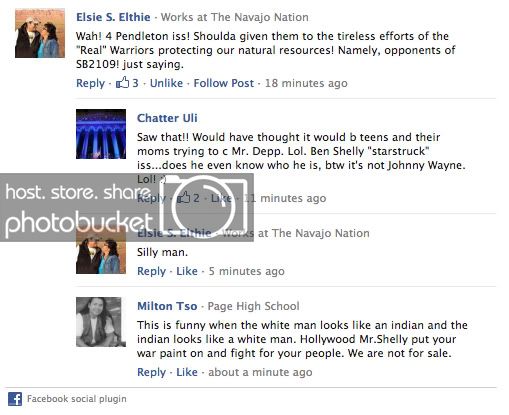
One of my concerns is the now-famous makeup Depp wears for the film. Does this reflect the practice of an actual tribe? The Tonto character’s affiliation is unclear from series to series. This underlines a persistent problem we Indians face, homogenization, the representation throughout the dominant culture that we are all one generic Plains tribe rather than the many unique tribes that we actually are members of. In the old radio program, Tonto was Potawatomi. This tribe hails from Michigan and not from the Southwest where the Lone Ranger’s story is played out. Some connect the Tonto name with the Tonto Apache, one of the groups of Western Apache. One of the objections to the name “Tonto” is that in Spanish it means “fool.” So the Spanish likely named the Apache tribe just as they named the Diné people “Navajo,” a corruption of a word meaning “people who grow plants in green valleys.”
A little research shows that Depp’s makeup is based on the work of non-Native artist Kirby Sattler. And while the I Am Crow image is killer cool, is it authentic? The artist has a short promo video here. He says on his web site:
“I purposely do not denote a tribal affiliation to the majority of my subjects, rather, I attempt to give the paintings an authentic appearance, provoke interest, satisfy my audience’s sensibilities of the subject without the constraints of having to adhere to historical accuracy.”
We have issues with this. So often, our story is not told accurately by outsiders. And Hollywood, in particular, has been the grossest example of generating stereotypes and perpetuating misinformation.

So, let’s just do the basic search on the Crow: The tribe is originally called “Apsáalooke,” which means “children of the large-beaked bird.” Whites later misinterpreted the word as “Crow.” Funny how that happens, huh? President Obama was adopted into the Crow Nation in 2008. Also note at that link the photos. No images like the Sattler piece appear. An image search produces many photos without any likenesses similar to the one from Sattler. However, lower down you can see his image appear, and it will likely rise as his hits increase due to the popularity of Depp. Thank you again, Hollywood, for influencing another probably incorrect perception of Indian cultures.
This little tangental google exercise still doesn’t address the question of what tribe is Tonto from?
We’ll never know.
Because these are stories told by the conquerers.

• Beer Bill Dies in Nebraska Legislature: A bill that would have created “alcohol impact zones” to curtail sales of booze in Whiteclay, Nebr., to Indians from just across the state boundary on the Pine Ridge Reservation has died in a legislative committee dominated by recipients of campaign money from the alcohol industry. Oglala Lakota leaders say beer sales there are a plague on their people. They filed a lawsuit against two major brewers, their distributors and the owners of four beer shops in the unincorporated town, which the 2010 Census showed has a population of 44. The equivalent of 4.3 million 12-ounce cans of beer was sold in Whitelclay in 2011, most of it to Indians. The suit says the businesses encourage the illegal possession, transport and consumption of alcohol on the reservation, where booze is banned. Whiteclay is little different than the “whiskey ranches” set up in the 19th Century to move illegal alcohol onto what was then called Pine Ridge Agency. Alcohol, Oglala leaders say, is behind 90 percent of the crime on the reservation and causes serious health problems.
-Meteor Blades
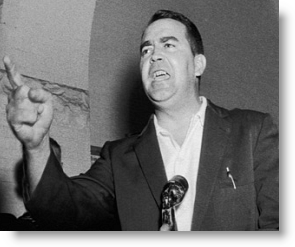
• PBS Program Shows How Klansman Hoaxed His Way to Becoming an ‘American Indian’ Best-selling Novelist : PBS is airing “The Reconstruction of a Asa Carter: His Greatest Story Was the One He Never Told” throughout April. Carter was a Klansman and George Corley Wallace’s speechwriter, the guy who reportedly invented the Alabama governor’s most famous incantation: “segregation now, segregation tomorrow, segregation forever!” He transformed himself into Forrest Carter, claimed to be Cherokee, and wrote The Education of Little Tree, , published in 1976. The book allegedly is about his childhood experiences. Well after his death in 1979, the book took off and sold more than a million copies. It won the 1991 American Booksellers Association Book of the Year (ABBY) award. Oprah Winfrey praised it to the skies. But it was an elaborate, well-written fabrication. The book clashes with the linguistic and cultural realities of the Cherokee. Noted Native author Sherman Alexie (Coeur d’Alene/Spokane/Flathead) has said: “Little Tree is a lovely little book, and I sometimes wonder if it is an act of romantic atonement by a guilt-ridden white supremacist, but ultimately I think it is the racial hypocrisy of a white supremacist.” A movie of the same name has also been made.
-Meteor Blades
• North Dakota’s Oil Boom Disastrous for Many Indians: For the Three Affiliated Tribes-the Mandan, Hidatsa and Arikara Nations-the phenomenal explosion in oil wealth from the Bakken shale has not trickled down. In fact, for poor Indians in the area, it’s been the opposite. Many are being evicted in New Town to make way for oil-field workers. The lack of housing in the area, a long-term product of failures by the Bureau of Indian Affairs, means there is no place to live for workers coming from outside the area. Solution? Evict people already living there, about 70 percent of whom are tribal members. So who gets evicted? The poorest people. That’s what has happened in a mobile home park that was purchased by a housing developer tightly linked to one of the major oil operations. The housing corporation claims it is both difficult to find housing and difficult to find land suitable for building new housing. So it plans to build new housing after it destroys the park. The eviction deadline is Aug. 31.
-Meteor Blades
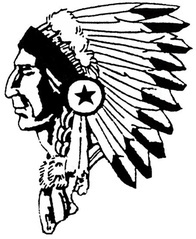
• Oregon Town’s Residents Fight to Keep Racist Mascot: Some citizens of Molalla have signed a petition to reject the Oregon Board of Education’s threat to cut off funding for schools that do not abandon Indian mascots within five years. As is so often the case, ignoring sociological studies, including those by Indians with both cultural and academic credentials, the petitioners in Molalla, a town of 6000 in northwest Oregon, say their high school mascot is all about honoring the Indians of the area, the Molale. But, in the common fashion of many such mascots, the depiction is stereotypically Plains style, the head of an Indian dressed in full “war bonnet” and looking a good deal like the composite Indian of the Buffalo nickel. Not as grotesque as Cleveland’s Chief Wahoo, but nothing to do with honor either. The Molale were forced off their land in the 1800s and are now a part of the Grand Ronde Tribe. (Here’s how they traditionally dressed.) The board started the mascot removal effort in 2006. State Superintendent Susan Castillo says six years of gathering evidence have increasingly made it clear that this is a civil rights issue.
-Meteor Blades
• Spirit Lake Tribe Suit for ‘Fighting Sioux’ Nickname Gets Court Hearing: Archie Fool Bear (Sisseton-Wahpeton Sioux) and the Spirit Lake Tribe of North Dakota took their argument to federal court last week to keep in place the disputed “Fighting Sioux” nickname of sports teams at the University of North Dakota. Some details of the argument are here. See our previous coverage here and here.
-Meteor Blades
• Digital Divide Isolates Tribal People in Remote Areas: For Wilhelmina Tsosie (Navajo), graduation day is now two semesters away. It should have been just one. The delay came because she has to drive 30 miles from her home on the Navajo Reservation to a hotel that has an Internet connection. Last term she missed too many assignments and now must take the course again. Like 90 percent of Indians on tribal lands, she lacks broadband service. “Native Americans face an ever-increasing digital divide, because they have been purposefully discriminated against in the business models and rollouts of next-generation networks,” said Sascha Meinrath, director of the Open Technology Initiative at the New America Foundation, a public policy think tank. “These are places that have been systematically forgotten by society.” The Federal Communications Commission initiated the Office of Native Affairs and Policy in 2010, one of the recommendations of the National Broadband Plan. ONAP’s mission includes promoting “the deployment and adoption of communications services and technology throughout Tribal Lands.”
-Meteor Blades
• Cherokee Girl’s Adoptive Parents Want Her Back: Matt and Melanie Capobianco have gone to the South Carolina Supreme Court to get 2 1/2-year-old Veronica back from her biological father, Dusten Brown (Cherokee). He gained custody four months ago under the 1978 federal Indian Child Welfare Act. The Capobiancos adopted Veronica in 2009 when her non-Native mother gave birth to the girl but could not take care of her. She was not married to Brown, who she said didn’t support her. He was in the Army when the adoption occurred and began proceedings to override the adoption when Veronica was four months old. The law requires that an Indian child whose parent(s) cannot care for him or her should be placed with a member of the child’s extended family, a member of the child’s tribe or a member of another Indian tribe. Chrissi Nimmo, assistant attorney general of the Cherokee Nation, says the law was passed “as a result of studies that found that Indian children were being removed from their families at a disproportionately higher rate than other children. […] “And 99 percent of Indian children in adoptive placements were in non-Indian homes.”
-Meteor Blades (with a h/t to Ojibwa)
• Ojibwa ‘Adopt’ Catholic Archbishop in Reconciliation Ceremony: Archbishop James Weisgerber, head of the Archdiocese of Winnipeg, was adopted in a traditional rite as a step toward healing old wounds. From 1884 to 1948, First Nations children were legally forced to leave their kin and attend residential schools where their religion, culture and language were systematically stripped away. Many of the schools were run by Catholic religious communities, in which physical and sexual abuse took place. The last residential school closed in 1996. “In so many ways, our presence here has damaged the aboriginal people-their culture, their language, their communities-and they are the ones who are asking us for reconciliation,” Weisgerber said in a speech after the ritual conducted by Ojibwa tribal elders. A Canadian government Truth and Reconciliation Commission is gathering stories of survivors, as many former students of the residential schools call themselves. It has also established a $5 billion compensation fund.
-Meteor Blades
• Former Landfill Operator Hopes to Make Big Bucks on White Buffalo: Lynn Pollard, who has been raising buffalo for two decades, has had his ups and downs with the animals. But now, after buying a white buffalo cow and successfully breeding her to produce another white one as well as buying a white bull, he hopes to do well all the time. Fully grown brown buffalo go for $1000 apiece, but a white can bring two to five times more. White buffalo are sacred to the Lakota and other Plains tribes. Pollard says he’s aware of their significance to those tribes but is himself only interested in the financial aspect.
-Meteor Blades
• Ojibwe Professor Helps Bridge Cultural Gap in Bemidji: In this town between Minnesota’s three largest Indian reservations, nearly a third of the people are Ojibwe and racial tensions have always been high. But, Anton Treuer (Ojibwe), a professor of Ojibwe at Bemidji State University and editor of the Oshkaabewist Native Journal, and Michael Meuers, a white resident, came up with a simple way to start breaking down barriers-putting up bilingual signs in public buildings such as schools and hospitals.
-Meteor Blades
• Manuals Being Developed for Ethical Health Studies of Indians : American Indians have profound health problems that could be aided by research. But Arizona State University’s use of blood samples taken from the tiny Havasupai tribe “put genetic research on the front burner,” says Ron Whitener, executive director of the University of Washington’s Native American Law Center in Seattle. He is working with the National Institutes of Health to put together manuals to help the tribes control research through methodical reviews of study proposals and by establishing protections both for human subjects and the tribal communities. Use of the blood samples for studies the Havasupai had not given their consent to led to a public apology and a $700,000 settlement from ASU. “Probably most offensive [of those uses],” Whitener said was ASU research and publication in journals of articles “looking at inbreeding among this very small tribe located at the bottom of the Grand Canyon.”
-Meteor Blades
• Klamaths Win Big on Water Rights: An administrative law judge on April 16 gave a resounding victory to the Klamath Tribes’ efforts to secure their treaty-reserved water rights. Water from the Klamath River and Klamath Lake was confirmed in the amounts claimed by the tribes and the Bureau of Indian Affairs as trustee for the tribes. Specifically, the judge ruled that the tribes’ water rights are the most senior in the Klamath Basin, seniority being one of the key factors in U.S. water law. The tribes were guaranteed their traditional rights to hunt, fish, trap and gather plants in the area in an 1864 treaty. But for 36 years, they have been in litigation to secure the water rights necessary to ensure the health of the game and plant life in the basin. The Native American Rights Fund, the nation’s oldest non-profit firm working for Indian rights, has been involved for the entire process.
-Meteor Blades
Indians have often been referred to as the “Vanishing Americans.” But we are still here, entangled each in his or her unique way with modern America, blended into the dominant culture or not, full-blood or not, on the reservation or not, and living lives much like the lives of other Americans, but with differences related to our history on this continent, our diverse cultures and religions, and our special legal status. To most other Americans, we are invisible, or only perceived in the most stereotyped fashion.First Nations News & Views is designed to provide a window into our world, each Sunday reporting on a small number of stories, both the good and the not-so-good, and providing a reminder of where we came from, what we are doing now and what matters to us. We wish to make it clear that neither navajo nor I make any claim whatsoever to speak for anyone other than ourselves, as individuals, not for the Navajo people or the Seminole people, the tribes in which we are enrolled as members, nor, of course, the people of any other tribes.

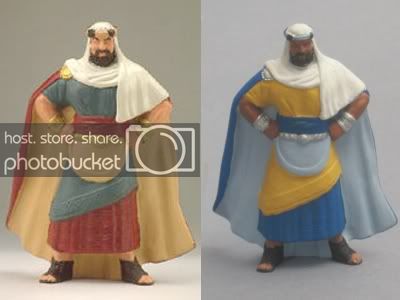
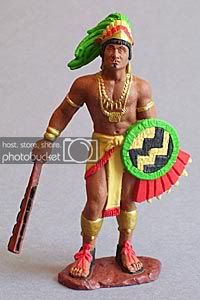

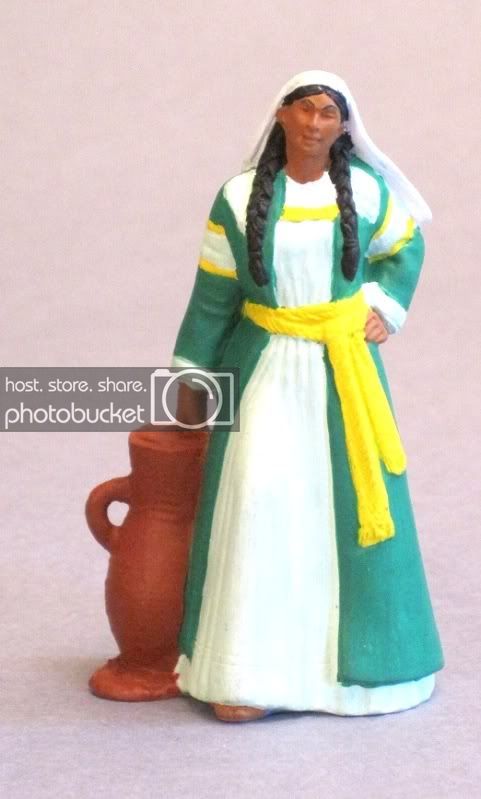
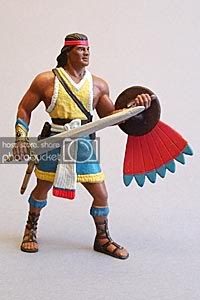
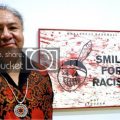
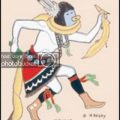
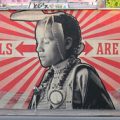

Leave a Reply